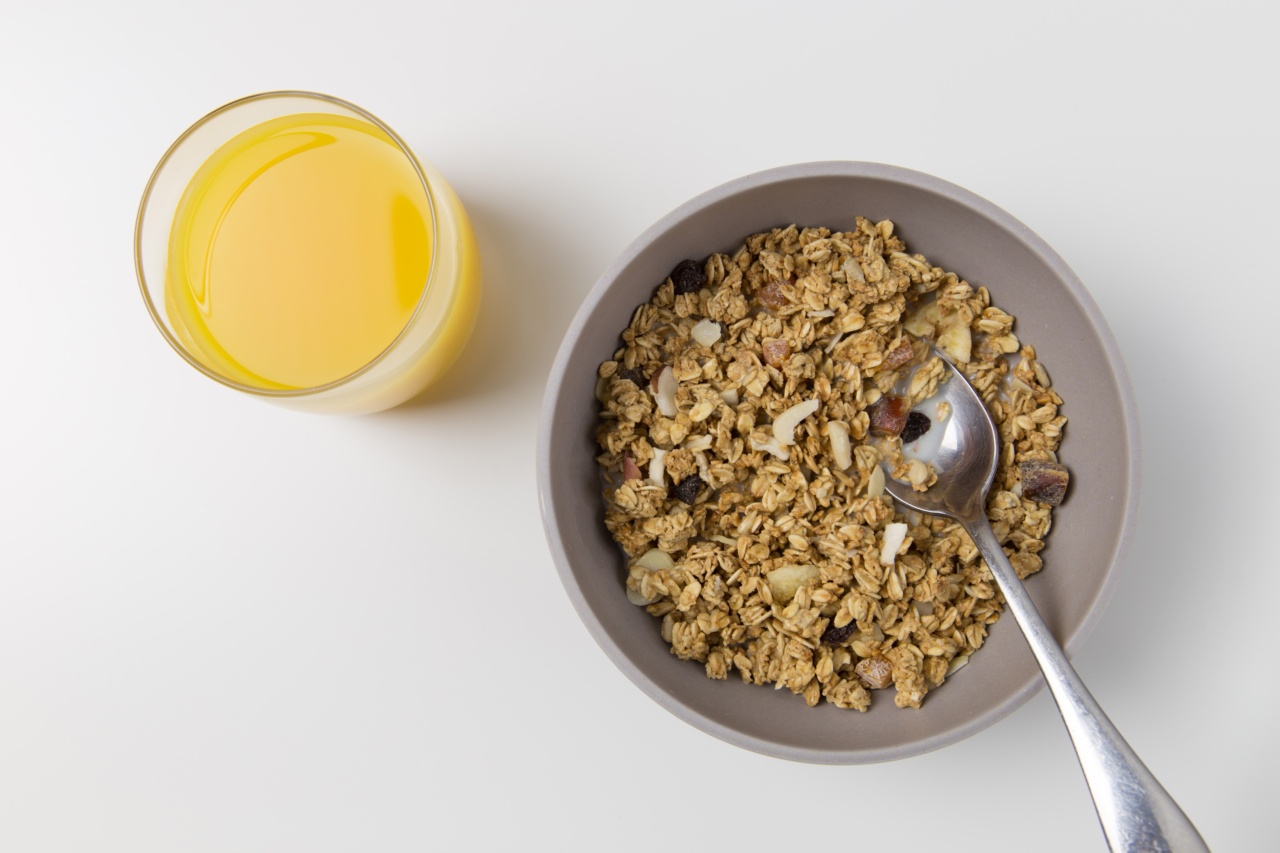When it comes to breast cancer prevention, there are various factors that can influence an individual’s risk. From genetics to lifestyle choices, understanding these factors can help in reducing the risk and promoting overall breast health.
One aspect that has gained significant attention in recent years is the role of fiber in the diet and its potential impact on breast cancer risk. This article explores the relationship between fiber consumption and its potential benefits in lowering the risk of breast cancer.
The link between fiber and breast cancer
Fiber is a type of complex carbohydrate found in plant-based foods. It is not broken down by the body, passing through the digestive system relatively intact.
Including an adequate amount of fiber in your diet offers numerous health benefits, including improved digestion, weight management, and reduced risk of chronic diseases such as heart disease and diabetes. Interestingly, studies have also suggested a possible association between fiber intake and breast cancer risk reduction.
Evidence from scientific studies
Several studies have examined the link between fiber consumption and breast cancer risk. One study published in the International Journal of Cancer analyzed data from over 90,000 women over a period of 20 years.
The study found that women with the highest fiber intake had a significantly lower risk of developing breast cancer compared to those with the lowest intake. The protective effect was particularly evident for premenopausal women.
Another study published in the Journal of Nutrition followed more than 35,000 women for almost a decade.
The researchers found that women who consumed higher amounts of fiber had a reduced risk of breast cancer compared to those with lower fiber intake. The study also suggested that each 10 grams per day increase in fiber intake was associated with a 7% decrease in breast cancer risk.
While these epidemiological studies provide valuable insights, it is important to note that they cannot establish a causal relationship between fiber consumption and breast cancer risk.
Further research is needed to explore the underlying mechanisms and confirm these findings.
Possible mechanisms for fiber’s protective effect
The exact mechanisms through which fiber may help lower the risk of breast cancer are not yet fully understood. However, researchers have proposed several hypotheses:.
1. Hormone regulation
High-fiber diets have been associated with lower circulating estrogen levels, which play a significant role in the development of some types of breast cancer.
Fiber may bind to estrogen in the digestive system and enhance its excretion from the body, thus reducing its impact on breast tissue.
2. Blood sugar control
Fiber-rich foods, such as whole grains, legumes, and vegetables, have a lower glycemic index and can help regulate blood sugar levels. High glycemic index diets and elevated blood sugar levels have been linked to an increased risk of breast cancer.
By promoting stable blood sugar levels, fiber may contribute to a lower risk of developing the disease.
3. Gut microbiota
The gut microbiota, the collection of microorganisms inhabiting our digestive system, plays a crucial role in various aspects of health. Research suggests that a diverse and healthy gut microbiota may contribute to reducing the risk of breast cancer.
Fiber acts as a prebiotic, providing nourishment to beneficial gut bacteria and supporting a healthy microbiota balance.
Tips for increasing fiber intake
If you are interested in incorporating more fiber into your diet to potentially reduce your breast cancer risk, here are some practical tips:.
1. Choose whole grains
Opt for whole grain bread, pasta, and rice instead of their refined counterparts. Whole grains are generally higher in fiber and contain more nutrients, making them a healthier choice overall.
2. Include more fruits and vegetables
Fruits and vegetables are excellent sources of fiber. Aim to include a variety of colorful produce in your meals to increase your fiber intake naturally.
3. Incorporate legumes
Beans, lentils, and chickpeas are all legumes that are not only high in fiber but also provide a good source of protein. Add them to soups, salads, or main dishes to boost your fiber consumption.
4. Snack on nuts and seeds
Almonds, chia seeds, and flaxseeds are all examples of nuts and seeds that are rich in fiber. Enjoy them as a snack or sprinkle them on top of your meals to add a nutritional punch.
5. Read food labels
When purchasing packaged foods, take a moment to read the nutrition labels. Look for products that are high in fiber and low in added sugars and unhealthy fats.
Conclusion
While the link between fiber consumption and reduced breast cancer risk is promising, it is important to adopt a holistic approach to breast health.
Regular exercise, maintaining a healthy weight, limiting alcohol consumption, and regular breast screenings are also crucial elements in minimizing the risk of breast cancer. Nevertheless, including fiber-rich foods in your diet can contribute to overall health benefits and may play a role in lowering the risk of breast cancer.




























